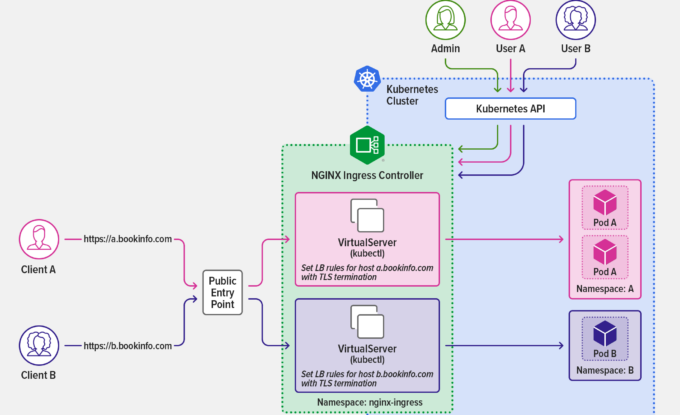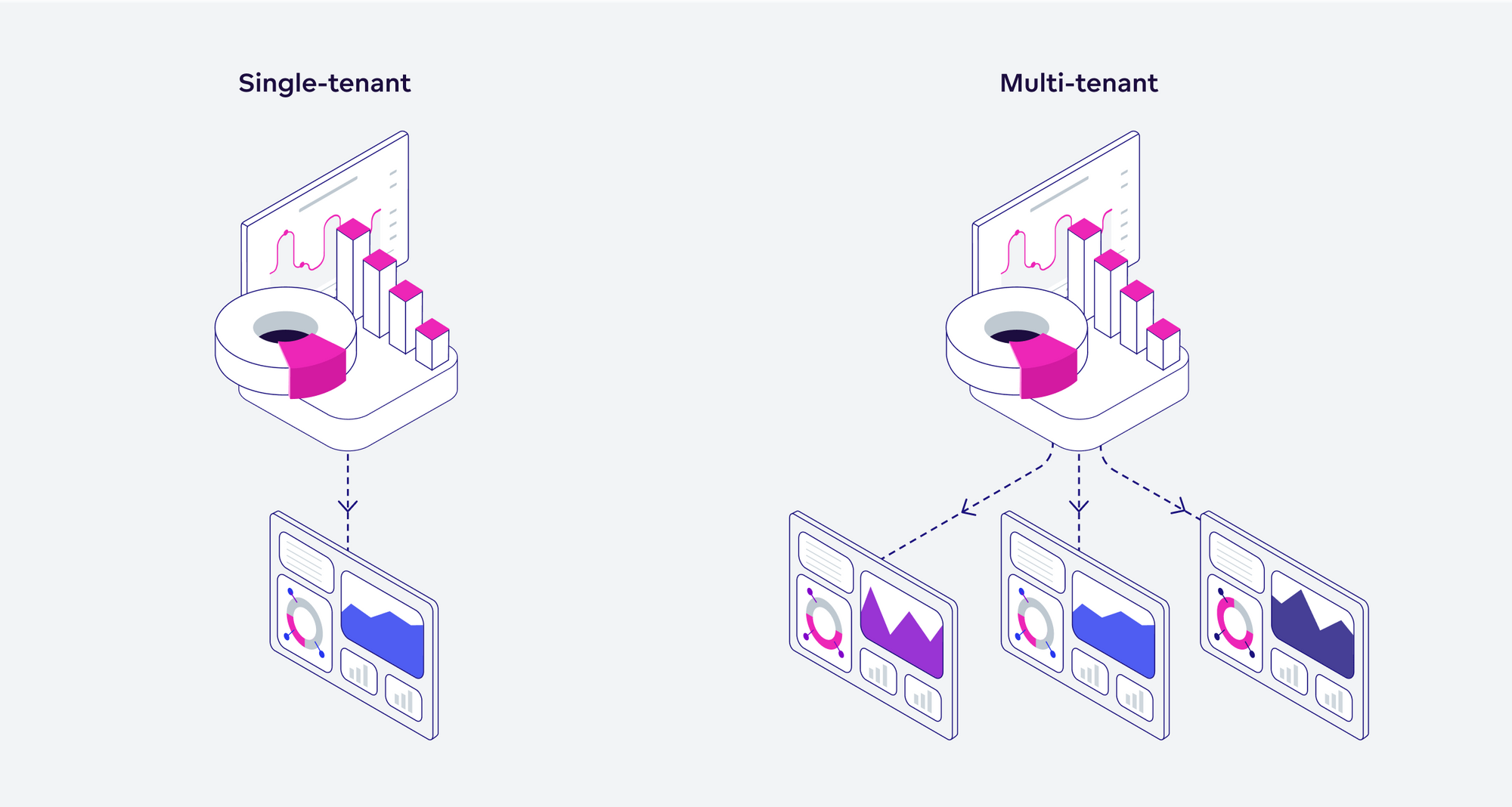The world of technology is an ever-evolving landscape where cloud computing plays a pivotal role. It’s like a vast canvas that continually expands, providing ample room for innovation and scalability.
Within this expansive canvas, Kubernetes shines in container orchestration, offering unparalleled capabilities. As we embark on this journey into the era of cloud computing, one particular feature of Kubernetes stands out prominently – its multi-tenancy.
This groundbreaking feature empowers organizations to achieve new levels of efficiency and scalability by seamlessly managing multiple tenants within a single Kubernetes cluster.
With Kubernetes multi-tenancy, businesses can optimize resource utilization, enhance security, and streamline operations, making it a game-changer in cloud computing. So, as we navigate through the ever-evolving realm of technology, let us embrace the power of Kubernetes multi-tenancy and unlock a new era of efficiency, scalability, and success in the cloud.
Understanding Kubernetes Multi-Tenancy

Navigating the realm of Kubernetes, one concept that stands out is multi-tenancy. It’s akin to residing in an apartment building, where everyone shares the same infrastructure but has private space.
In Kubernetes, this translates to multiple users or “tenants” sharing the same system resources while running their distinct workloads.
Kubernetes multi-tenancy brings several unique benefits:
- Efficiency: By sharing resources, organizations can significantly optimize their operational efficiency.
- Cost-effectiveness: Managing a single system rather than multiple separate ones can lead to substantial cost savings.
- Scalability: Kubernetes multi-tenancy allows for easy scaling of operations as the system can accommodate more tenants without requiring additional resources.
However, implementing multi-tenancy in Kubernetes necessitates careful consideration. Here are some key points to understand:
- Namespace-based Multi-tenancy: The most common form of Kubernetes multi-tenancy is namespace-based. Each tenant gets a namespace, and their workloads are isolated within these namespaces. This method is simple and requires fewer resources, but it has limitations, primarily around security and isolation.
- Virtual Clusters: A more robust solution for isolation in a Kubernetes multi-tenant environment is using virtual clusters. Each tenant gets its virtual cluster, providing greater isolation and security.
- Security and Isolation: In a multi-tenant environment, security is paramount. Kubernetes provides various mechanisms to ensure that each tenant can only access their designated resources. One way to bolster security is through “Intermediated Access” to the Kubernetes API Server, allowing for improved management and resource control.
- Observability: Monitoring the performance and health of the system is crucial in a multi-tenant environment. Observability in Kubernetes includes monitoring metrics, logs, and traces, providing valuable insights into the system’s operation.
So, Kubernetes multi-tenancy is a powerful feature that can significantly enhance efficiency and scalability in cloud computing. However, it requires careful planning and management to ensure optimal performance and security.
Different Approaches to Multi-Tenancy in Kubernetes

The world of Kubernetes is vast and diverse, and when it comes to multi-tenancy, there are several approaches that one can consider. Each approach has its own set of benefits and challenges, and the choice largely depends on the specific needs and requirements of the tenants.
- Namespace-Level Tenancy: This is the simplest form of Kubernetes multi-tenancy. This approach assigns each tenant their namespace within a single Kubernetes cluster. Each namespace acts as a separate “apartment” where tenants can run their workloads without having access to other tenants’ resources. While namespace-level tenancy is straightforward to implement, it does have its limitations, primarily around security and isolation.
- Virtual Cluster Multi-Tenancy: This approach offers a higher level of security and isolation than namespace-level tenancy. In virtual cluster multi-tenancy, virtual clusters are created within a physical Kubernetes cluster. Each tenant gets their virtual cluster, providing stronger isolation between tenants. This approach, however, requires more resources and careful management to ensure optimal performance.
When deciding on a multi-tenancy strategy, there are several key factors to consider:
- Functionality: The chosen approach should meet the specific needs and requirements of the tenants. For instance, if strong isolation is a priority, virtual cluster multi-tenancy may be preferred.
- Security: Multi-tenancy inherently involves sharing resources, which introduces potential security risks. Therefore, the selected approach should provide robust security mechanisms to protect each tenant’s data and workloads.
- Scalability: The chosen approach should allow for easy scaling as the number of tenants increases.
- Administrative Overhead: Some multi-tenancy approaches require more administrative effort than others. Considering the resources and time necessary to manage the multi-tenant environment effectively is crucial.
Remember, deciding which approach to adopt requires a clear understanding of what you want to achieve and the potential trade-offs involved. The right multi-tenancy strategy can significantly enhance efficiency, reduce costs, and improve productivity for development teams.
Ensuring Security and Isolation in a Multi-Tenant Environment

In a multi-tenant environment, security isn’t just an option; it’s a necessity. Imagine living in an apartment building with no locks on the doors; that wouldn’t be very secure, would it?
The same principle applies to Kubernetes multi-tenancy. One way to bolster security is through “Intermediated Access” to the Kubernetes API Server, allowing for improved management and resource control.
The Importance of Observability in a Multi-Tenant Cluster
Observability is like having a clear window into the operations of your cluster. It includes monitoring metrics, logs, and traces, providing valuable insights into the health and performance of your system.
In the context of Kubernetes multi-tenancy, observability is crucial for ensuring smooth operation. It identifies potential issues before they escalate.
Choosing the Right Multi-Tenancy Strategy
Choosing the right Kubernetes multi-tenancy strategy is like selecting the perfect ingredients for a recipe.
Administrators play a pivotal role in gathering tenant requirements and considering factors such as functionality, security, scalability, and administrative overhead. The choice of strategy will significantly influence the overall efficiency and effectiveness of the multi-tenant environment.
Harnessing the Power of Kubernetes Multi-Tenancy: A Strategic Conclusion
As we venture further into the future of cloud computing, Kubernetes multi-tenancy stands out as a key feature, enabling reduced operational overhead, cost optimization, and improved productivity for development teams. It’s like opening a new door to an avenue filled with opportunities and possibilities.
The journey into Kubernetes multi-tenancy may seem intricate, but the rewards are worth the effort. So here’s to exploring, learning, and innovating in this remarkable field of cloud computing. After all, as we’ve seen time and again, the only constant in technology is change. And with Kubernetes multi-tenancy, that change looks incredibly promising.










